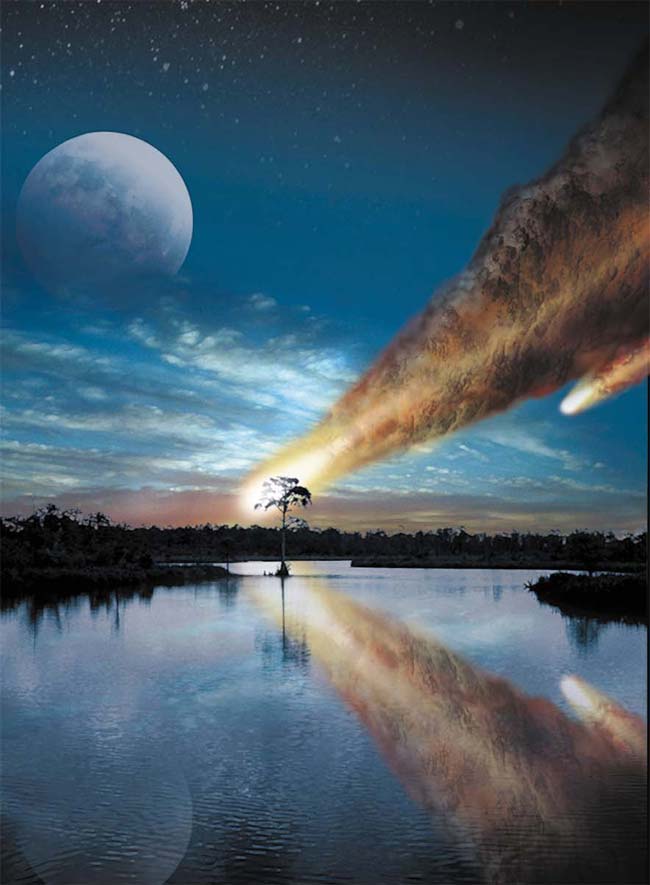Life Survived Catastrophic Space Rock Impact

The trueimpact of an asteroid or comet crashing near the Chesapeake Bay 35 millionyears ago has been examined in detail for the first time. The analysis revealsthe resilience of life in the aftermath of disaster.
The impactcrater, which is buried under 400 to 1,200 feet (120 to 365 meters) of sand,silt and clay, spans twice the length of Manhattan. The sprawlingdepression helped create what would eventually become Chesapeake Bay. About10,000 years ago, ice sheets began to melt and once-dry river valleys filledwith water. The rivers of the Chesapeake region converged directly over theburied crater, according to the U.S. Geological Survey (USGS).
GregoryGohn of the USGS and his colleagues analyzed samples from two deep holesdrilled into the crater near its center.
"Ithink what we wanted to do is drill into the central part of the crater and getas long of a section as we could and understand the processes that put them inthe order we found them," Gohn told SPACE.com.
Withinseconds of the object's touchdown, rocks were flung high into the air. Theforce of the impact carved a colossal cavity and caused temperatures toskyrocket, turning brittle rocks into taffy. Then, material along the cavity'srim surged downhill into the bowl-shaped depression like an avalanche.
The extremeheat, the researchers say, killed off most life. However, they found abundantmicrobes living today in the deepest parts of the crater. Some of the ancientbacteria would have survived the impact, the researchers say, because theirlittle hideouts didn't feel the brunt of the heat. The rest of the abundant andnewly discovered microbial life is thought to have recolonized the zapped areapossibly tens of thousands of years following the impact when temperaturesdropped to habitable levels.?
"Theimpact broke up and disaggregated all of these blocks of rock," said researcherMary Voytek, a microbiologist at the USGS, "and that actually createsspace for [the microbes] to colonize and it also creates new routes for waterand material to move though, which is always good for bugs."
Get the Space.com Newsletter
Breaking space news, the latest updates on rocket launches, skywatching events and more!
So a catastrophicevent like this could actually be a boon to microbes, at least in thelong-run, Voytek said. The impact breaks up compacted rock to create nooks andcrannies for bacteria to reside in, and it also brings in a fresh supply offood.
"It'ssomewhat analogous to whale falls," when a whale carcass eventuallysettles on the sea floor, Voytek said. "All of a sudden it?s a restaurantfor these bugs."
Understandingthe biological effects of this asteroid impact will shed light on the potentialfor life deep underground during Earth's Archaean period, 3.8 billion to2.5 billion years ago, when impacts were more frequent than today. The resultsalso have implications for predicting life in the deep biosphere on Mars.
"Ifwe're going to find life [on Mars], everyone agrees a good place to look is inthe subsurface," Voytek said.
The project, which is detailed in the June 27 issue of the journal Science, was funded by the USGS, NASA, the National Science Foundation, the AustrianScience Foundation and DOSECC Inc.
- Video: The Asteroid Paradox
- Image Gallery: Earth's Meteor Craters
- 10 Ways to Destroy Earth
Join our Space Forums to keep talking space on the latest missions, night sky and more! And if you have a news tip, correction or comment, let us know at: community@space.com.












